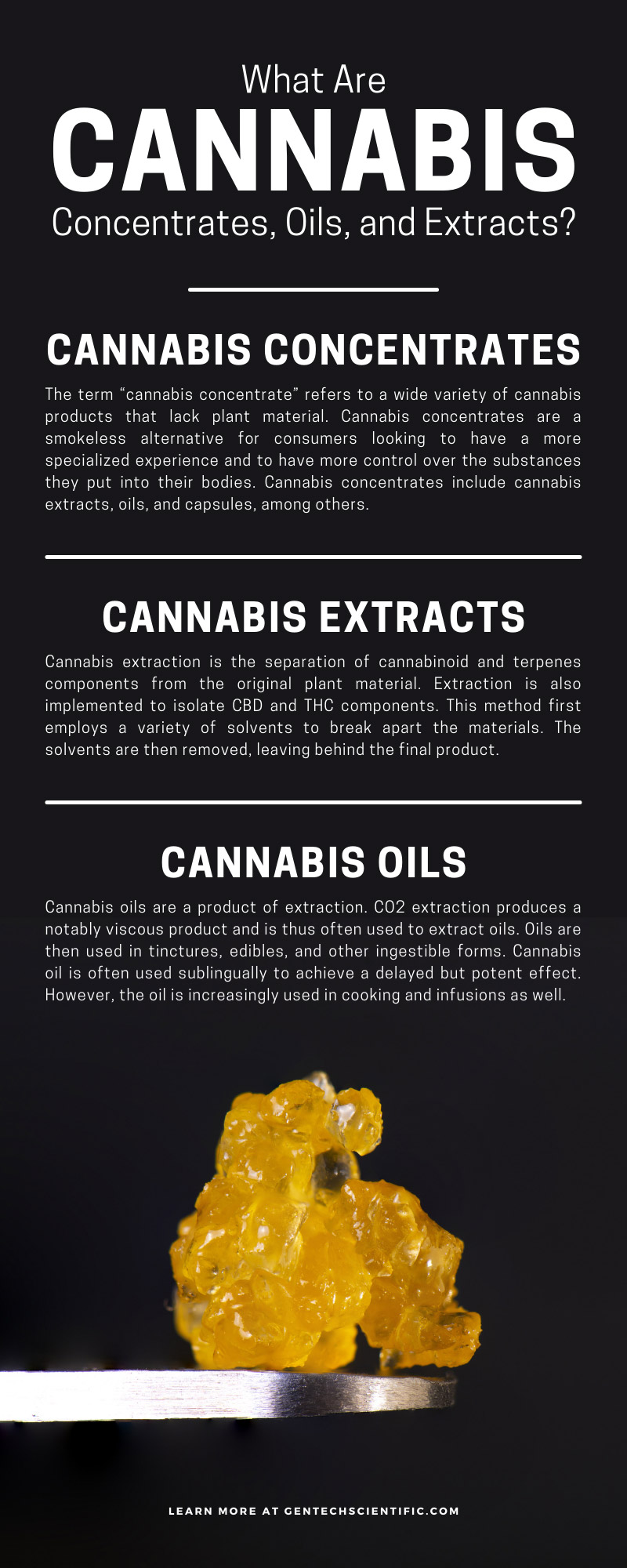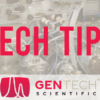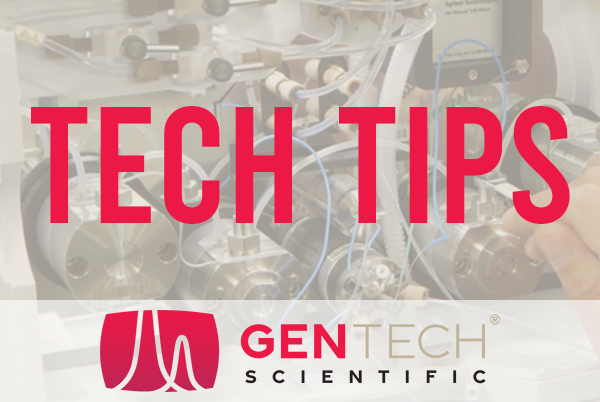The available forms of cannabis products and subsequent usage options continue to grow and change as more states legalize cannabis consumption. In turn, more non-THC alternatives are rapidly entering the market. This article intends to answer the question, “What are cannabis concentrates, oils, and extracts?” for labs, businesses, and anyone seeking a better understanding of cannabis products as the industry expands.
Cannabis Concentrates
The term “cannabis concentrate” refers to a wide variety of cannabis products that lack plant material. Cannabis concentrates are a smokeless alternative for consumers looking to have a more specialized experience and to have more control over the substances they put into their bodies. Cannabis concentrates include cannabis extracts, oils, and capsules, among others.
Concentrates are produced to match desired potency, THC and CBD levels, textures, and flavors. Businesses seeking cannabis concentrates aim to meet the needs of a wide variety of consumers and require detailed information regarding the composition of each concentrate so that customers can stay accurately informed.
Cannabis Extracts
Cannabis extraction is the separation of cannabinoid and terpenes components from the original plant material. Extraction is also implemented to isolate CBD and THC components. This method first employs a variety of solvents to break apart the materials. The solvents are then removed, leaving behind the final product.
Different solvent types result in different textures, potencies, and uses. CBD products made using cannabis extraction include butters, oils, waxes, and shatters.
Cannabis Oils
Cannabis oils are a product of extraction. CO2 extraction produces a notably viscous product and is thus often used to extract oils.
Oils are then used in tinctures, edibles, and other ingestible forms. Cannabis oil is often used sublingually to achieve a delayed but potent effect. However, the oil is increasingly used in cooking and infusions as well.
As CBD oil continues to grow in popularity, the demand for reliable and effective potency and solvent analysis testing labs grows as well.
How Solvents Are Removed
Solvents are removed from cannabis extracts using one of several methods. Vacuum ovens are commonly relied on to evaporate the solvent while keeping the extract below a specific desired temperature. As cannabinoids can be damaged if they reach undesired heat levels, alternatives such as rotary evaporators and falling film evaporators are entering the market to offer producers more control over the vacuum oven process.
CO2 extraction notably does not require purging of the solvent afterward, but tests are still necessary to ensure that all gasses are released and that the final product is consumable.
Residual Solvent Analysis
Unfortunately, the extraction process often leaves behind amounts of solvent or impurities as byproducts. Residual Solvent Analysis is necessary for labs producing cannabis extract, as this form of testing ensures that no toxic components remain after the process is completed.
Residual solvents are broken into the following three classes:
Class 1 Solvents
Class 1 contains solvents that cannot be used due to their designation as dangerous for human consumption. Examples of Class 1 solvents include benzene and carbon tetrachloride. While benzene and carbon tetrachloride are both immediately hazardous to human health and should not be ingested, some Class 1 solvents are also environmental hazards as well.
Class 2 Solvents
Class 2 solvents must be limited due to the adverse effects they are suspected of causing. Some examples of Class 2 solvents include chloroform, dioxane, and methanol. Accepted levels of Class 2 solvents vary between cannabis products, but acceptable levels measured during the residual solvent analysis are so small that they are measured in parts per million. Even the minor presence of Class 2 solvents is noteworthy.
Class 3 Solvents
Class 3 solvents are regarded as safe to use for cannabis extraction. Ethanol, butane, and acetone are all commonly used extraction solvents that fall under the Class 3 category. It is important to know that while these solvents are not known as toxic, the presence of Class 3 solvents is still tested and measured as the long-term effects of repeat exposure are not yet known.
Compound Profiling
Another important aspect of cannabis concentrate analysis is compound profiling. Gas and Liquid Chromatography allow analysis labs to measure the diverse components of each strain of plant alongside the potency levels. Beyond providing accurate labeling to standard consumers, understanding the components inside of cannabis products gives physicians the ability to confidently prescribe cannabis products as a form of treatment.
Are the Terms Interchangeable?
It is not uncommon to see the three terms used to describe the same product. Seeing the terms used interchangeably is becoming more common as the market rapidly grows. However, a lab or business that uses accurate terminology better gains the trust of a well-informed clientele.
THC Levels in Cannabis Products
Cannabis concentrates, oils, and extracts all possess varying THC levels. This factor is key for retailers looking to remain within the legal boundaries set by each state. These businesses rely on Gas Chromatography testing and High-Performance Liquid Chromatography to provide accurate measurements from analysis labs to remain a reliable, credible competitor in the cannabis market.
Potency Measurement
As of 2021, the THC threshold for CBD and federally legal cannabis products is 0.3% of any given product. Potency measurement becomes crucial for new CBD products entering the market looking to stay within federal regulation. It is important to know that this limit is subject to change with time, so businesses will continue to heavily rely on cannabis analysis labs for assistance.
Product Regulations in the United States
The testing and accreditations required for those interacting with cannabis, from growers to the laboratories themselves, change from state to state. Due to the varied testing needs across the country, each lab will need to have the necessary instruments to meet their individual requirements.
As the country becomes more familiar with cannabis products and innovation within the industry continues, cannabis analysis labs will need to remain vigilant regarding newly adopted testing standards in their area. While some states have self-policing lab policies and limited testing requirements, other states such as California currently require in-depth testing on all cannabis products.
The most commonly tested factors include moisture, microbial impurities, foreign materials, heavy metals, and residual solvents.
Start your cannabis lab on the right foot with customized training and education, reliable repair services, and a trusted partner that shares in your goal of moving research forward. Reach out to our team of trained technicians at GenTech Scientific to discover more about the variety of analytical testing equipment options, instruments, and beneficial services we offer.






